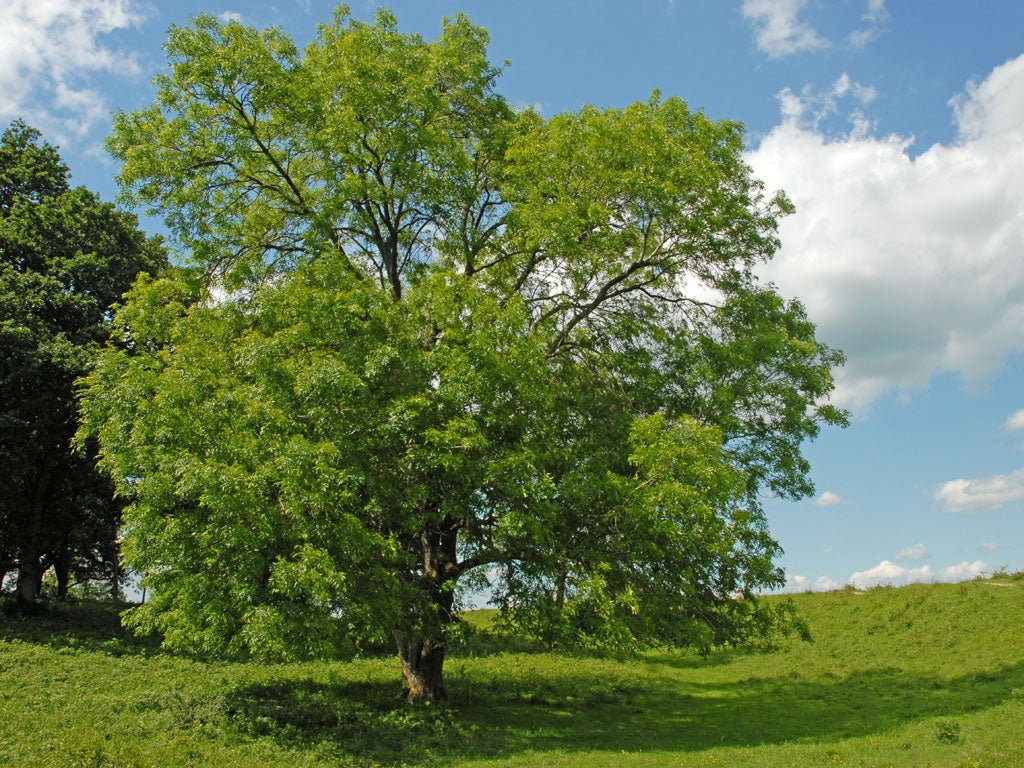Deadly ash disease found in Essex and Kent woodlands
Tree-killing spores may have been carried by winds from Europe, say government scientists

Your support helps us to tell the story
From reproductive rights to climate change to Big Tech, The Independent is on the ground when the story is developing. Whether it's investigating the financials of Elon Musk's pro-Trump PAC or producing our latest documentary, 'The A Word', which shines a light on the American women fighting for reproductive rights, we know how important it is to parse out the facts from the messaging.
At such a critical moment in US history, we need reporters on the ground. Your donation allows us to keep sending journalists to speak to both sides of the story.
The Independent is trusted by Americans across the entire political spectrum. And unlike many other quality news outlets, we choose not to lock Americans out of our reporting and analysis with paywalls. We believe quality journalism should be available to everyone, paid for by those who can afford it.
Your support makes all the difference.The deadly fungus threatening Britain’s 80 million ash trees is more widespread than first thought and has already been detected at 82 separate sites, Government scientists confirmed today.
Intensive surveys over the weekend found that chalara, or ash dieback disease, was present in established woodlands in Essex and Kent, as well as in Norfolk and Suffolk where it was first found last month. It is now believed that the fungal spores may have been carried on the wind from continental Europe. Initially it was thought the disease had come in with the import of infected young trees.
More outbreaks are expected to be confirmed in southern and eastern coastal counties in coming weeks. Chalara, for which there is no cure, has now been confirmed at 14 nurseries, 36 planting sites and 32 locations in the wider environment across Britain, according to the Department for Environment, Food and Rural Affairs.
The confirmation of the infection’s extent, especially in fully-grown woods, means it will be harder than ever to contain, and perhaps impossible to eradicate. This grim outlook will be addressed on Wednesday at an emergency “tree summit” held by the Environment Secretary, Owen Paterson.
“Once we had the scientific advice that the disease had probably arrived by wind from Europe, it was always likely that we’d find it in coastal areas,” said Mr Paterson.
“Sadly that’s the case with the confirmation today of the disease in Kent and Essex. I would expect even more cases to be confirmed.”
More than 500 Forestry Commission staff, as well as many volunteers, are examining around 2,500 blocks of land, each 10 kilometres square, where mature ash trees are known to be present. Preliminary results will be available for the “tree summit”, where scientists, environmental and conservation charities and landowners will try to thrash out an anti-chalara strategy.
The UK’s chief plant health officer, Martin Ward, yesterday said that defeating the infection entirely was unlikely. “We are probably not going to be able to eradicate it,” he said. Meanwhile, a nursery which was forced to destroy 50,000 young ash trees is suing the Government for failing to block imports sooner.
Simon Ellis, of Crowders Nurseries in Horncastle, Lincolnshire, said the Horticultural Trades Association wrote to ministers in 2009 warning of a new virulent strain of the disease and calling on it to close UK borders. But the Government banned imports only last week.
The new findings suggest the disease will be even harder to contain or eradicate
Join our commenting forum
Join thought-provoking conversations, follow other Independent readers and see their replies
Comments